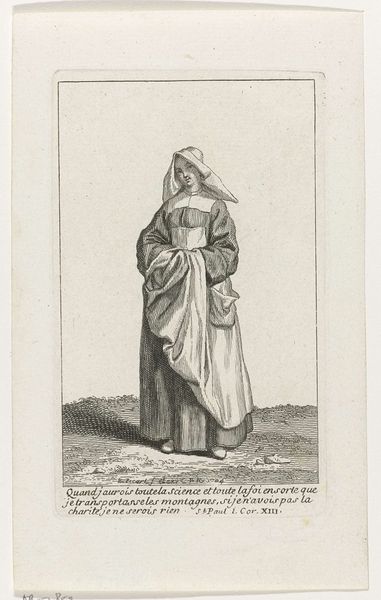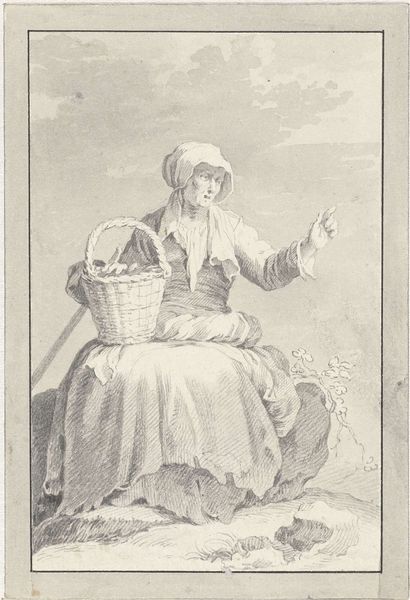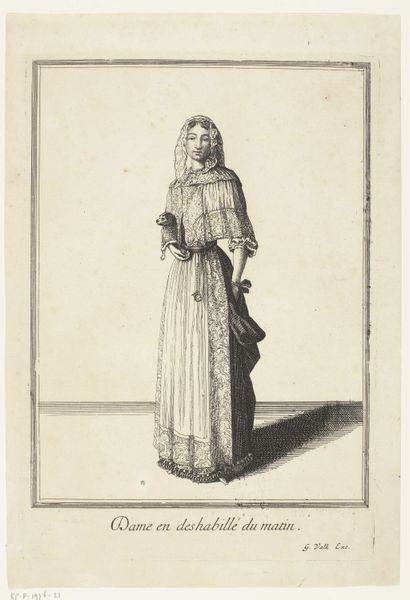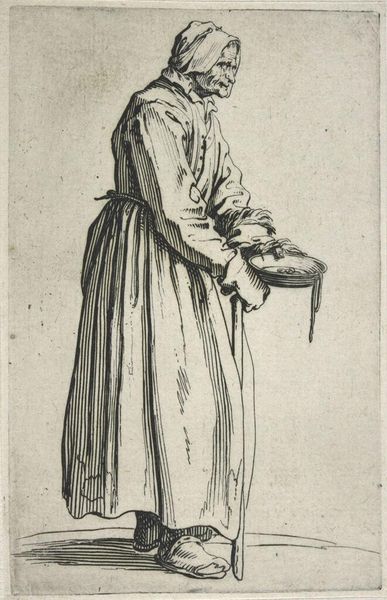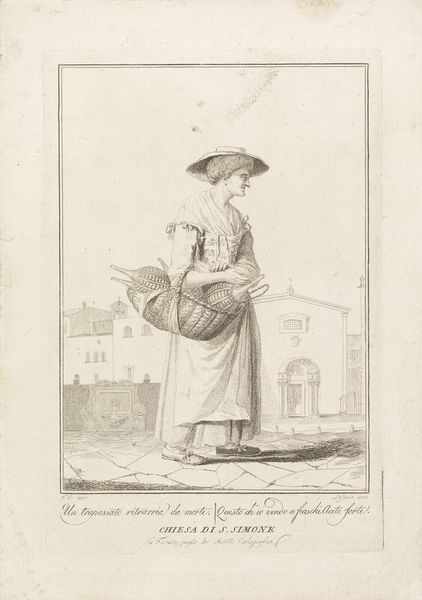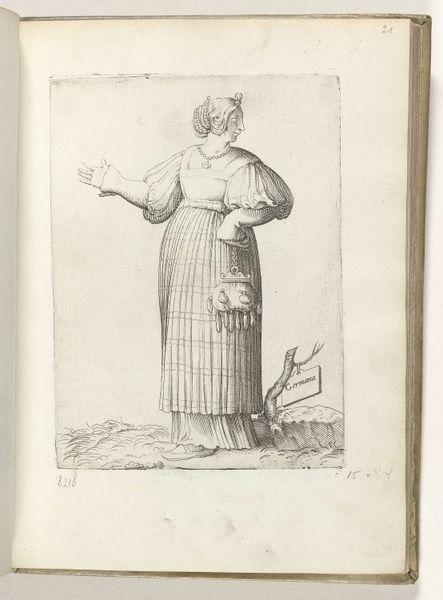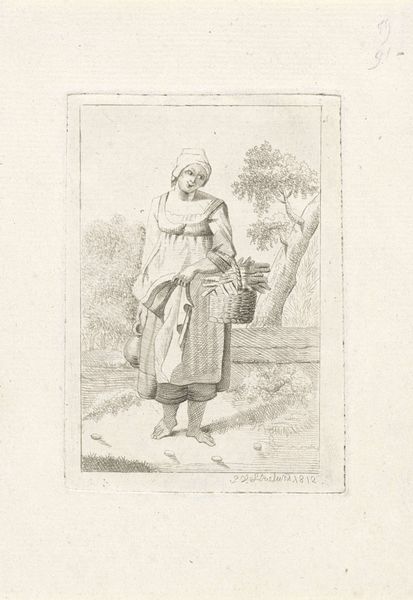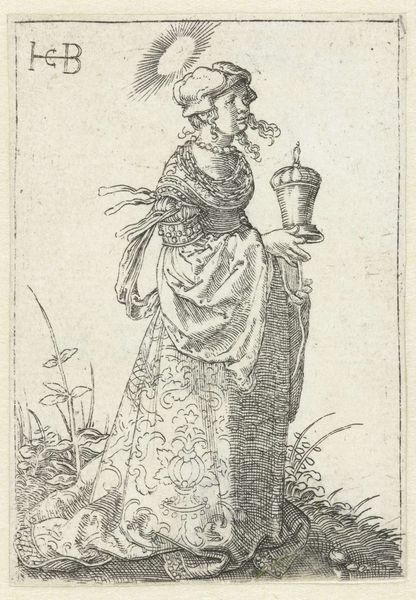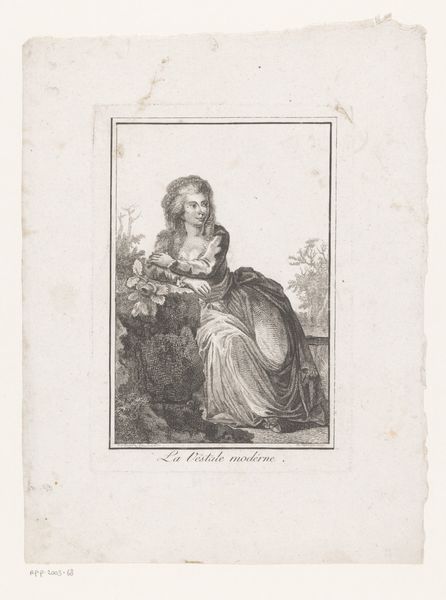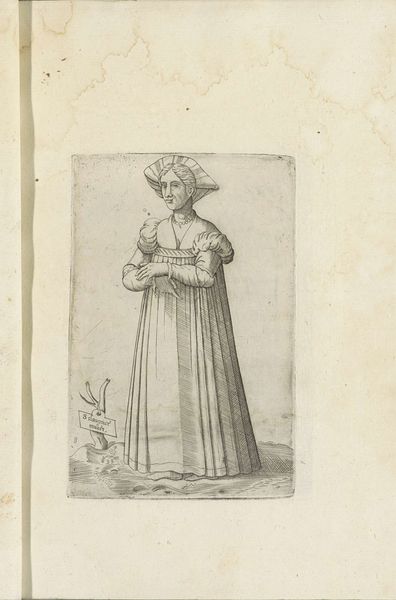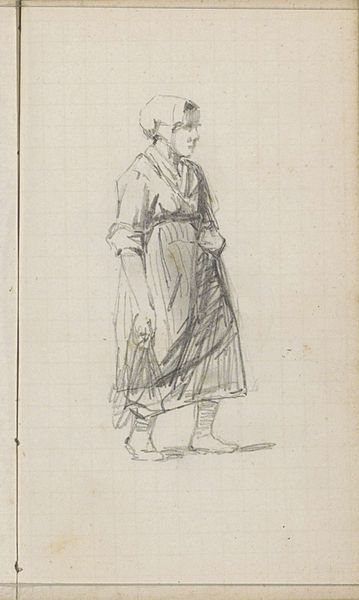
drawing, ink
#
portrait
#
drawing
#
neoclacissism
#
light pencil work
#
quirky sketch
#
pencil sketch
#
old engraving style
#
personal sketchbook
#
ink
#
idea generation sketch
#
sketchwork
#
sketchbook drawing
#
genre-painting
#
storyboard and sketchbook work
#
sketchbook art
Dimensions: height 240 mm, width 167 mm
Copyright: Rijks Museum: Open Domain
Curator: Today, we’re looking at “Dienstmeid,” a drawing rendered around 1775 by Giovanni David, here in the Rijksmuseum. Editor: My immediate impression is of quiet domesticity, a serene yet somewhat detached portrayal. The stark ink lines give it a sense of unassuming elegance. Curator: Indeed. Notice how David employs a very linear style, typical of the neoclassical movement. The emphasis is on clean contours and balanced composition, evident in the figure's central placement and the flanking potted plants and receding steps. The hatching is also fairly regular, emphasizing tonal values rather than dramatic chiaroscuro. Editor: Beyond its aesthetic construction, I find myself pondering the iconography of the serving maid. The act of carrying a tray has its own history – an archetype for female servitude. How does David both utilize and perhaps subvert this very loaded visual language? I also wonder what the content of that tray is and what symbolic significance can it carry? Curator: An astute point. David gives us the figure but mutes emotional expression and contextual cues to foreground idealized form and a precise record of objective representation rather than emotional weight. You also touched on a relevant theme within Neoclassicism which aimed for noble simplicity by looking back to antiquity. David has given the female figure in “Dienstmeid” an objective, emotionless affect; much in line with the artistic theories of Johann Winckelmann. Editor: But even within a formal framework that leans towards restraint and idealization, one cannot fully extract symbolic meaning, no? The attire, for instance – simple and unadorned – speaks to a specific social status, a subtle narrative of class distinction rendered through visual shorthand. Curator: You're right. David uses clear formal structure with enough narrative to keep one intrigued with the theme; his balanced approach offers a glimpse into genre-painting as high art during the Neoclassical period. The balance is key here! Editor: Precisely. Perhaps the strength of the piece resides in the conversation it sparks between aesthetic design and sociohistorical context. Curator: Thank you for those fascinating thoughts. For me, it’s the mastery of line and form that keeps me coming back to this work, reminding us of the core principles that govern Neoclassical art.
Comments
No comments
Be the first to comment and join the conversation on the ultimate creative platform.

